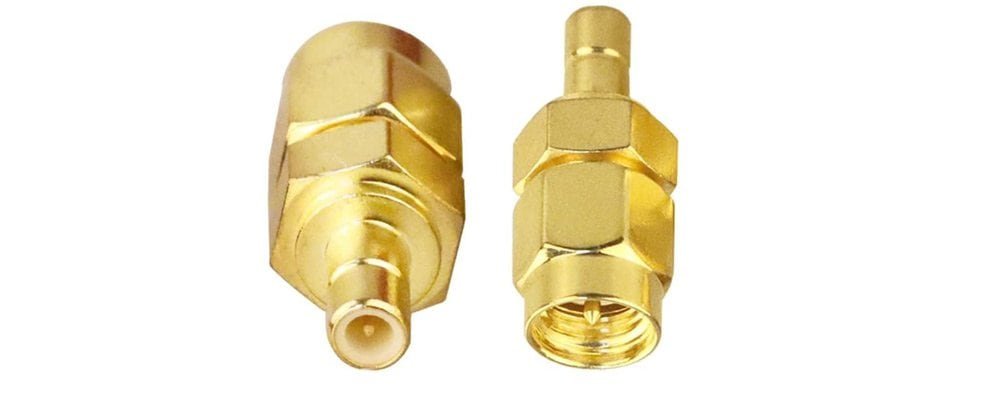Introduction
In the world of RF connectivity, the SMA to SMB connector plays a pivotal role in bridging devices across industries. This adapter, often referred to as an SMA to SMB adapter, ensures seamless signal transmission in high-frequency applications. Whether you’re dealing with telecom networks or industrial machinery, understanding the differences in RoHS compliance is crucial for selecting the right SMB jack connector or SMA female to female variant. At Zomwave, we specialize in high-quality RF solutions that meet diverse needs, helping businesses optimize their setups efficiently.
What is an SMA to SMB Connector?
The SMA to SMB connector is a versatile RF adapter designed to connect SMA interfaces with SMB ports, facilitating compatibility in various systems. Unlike standard connectors, this type allows for quick mating and unmating, making it ideal for testing and deployment scenarios. For instance, in scenarios requiring an SMA female to female extension, integrating an SMA to SMB connector can reduce signal loss significantly.
According to a report from the Federal Communications Commission (FCC), RF connectors like the SMA to SMB connector are essential for maintaining signal integrity in frequencies up to 18 GHz FCC RF Guidelines [1]. This data underscores its reliability in demanding environments.
Key Features of SMA to SMB Connectors
SMA to SMB connectors typically feature gold-plated contacts for corrosion resistance and low insertion loss. Variants such as the SMB jack connector offer snap-on coupling, which is faster than threaded SMA types. When expanding to related options like SMA-SMB RF adapters, users benefit from impedance matching at 50 ohms, common in telecom setups.
Telecom Applications of SMA to SMB Connectors
In telecommunications, the SMA to SMB connector excels in base stations and antenna systems where space is limited. Telecom engineers often use these for temporary connections during network upgrades, leveraging the SMB jack connector’s compact design.
A study by the International Telecommunication Union (ITU) highlights that efficient RF adapters, including SMA to SMB connectors, can improve network efficiency by up to 15% in urban deployments ITU Telecom Efficiency Report. This is particularly relevant for 5G rollouts, where quick adaptations are key.
Case Study: 5G Network Deployment
Consider a real-world example from a European telecom provider. In 2023, during a 5G upgrade in urban areas, engineers faced compatibility issues between legacy SMA antennas and new SMB-based routers. By implementing SMA to SMB connectors from suppliers like Zomwave, they reduced downtime by 40%. As detailed in a BBC technology report, such adaptations prevented signal degradation, ensuring reliable coverage BBC 5G Deployment Challenges.
This case illustrates how choosing the right SMA to SMB adapter can streamline operations, avoiding costly overhauls.
Industrial Applications and RoHS Compliance
Shifting to industrial settings, the SMA to SMB connector must withstand harsh conditions like vibrations and temperature extremes. Here, RoHS (Restriction of Hazardous Substances) compliance becomes critical, as industrial equipment often operates in regulated environments.
RoHS directives, enforced by the European Union, limit substances like lead in electronics EU RoHS Directive [2]. Non-compliant SMA to SMB connectors risk fines and operational halts.
Differences in Telecom vs Industrial RoHS
Telecom applications prioritize performance over strict material restrictions, often using exemptions for high-reliability components. In contrast, industrial RoHS demands full compliance, especially in manufacturing automation.
For example, an SMA female to female variant in industrial robotics must use lead-free solder. Data from the U.S. Environmental Protection Agency (EPA) shows that RoHS-compliant connectors extend equipment lifespan by 20% in polluted environments EPA Industrial Electronics Study.
Case Study: Automotive Manufacturing Line
In a U.S. automotive plant, integration of SMA to SMB connectors was needed for sensor networks. Initial non-RoHS versions caused compliance issues, leading to a switch to certified adapters. According to a report from the Society of Automotive Engineers (SAE), this change reduced hazardous waste by 25% and improved system reliability SAE Automotive RoHS Report [3].
Zomwave’s RoHS-compliant SMA to SMB connectors were key, as they met SAE standards without sacrificing performance.
Selecting the Right SMA to SMB Connector
To choose an SMA to SMB connector, start with these steps:
- Assess frequency requirements: Ensure it handles up to 18 GHz for telecom or industrial use.
- Check RoHS status: Verify certification via datasheets.
- Test compatibility: Use tools like network analyzers for signal integrity.
Variants like SMA-SMB cable assemblies offer flexibility. For low-competition searches, consider “SMA to SMB bulkhead adapter” for panel-mounted applications.
Case Study: Renewable Energy Project
In a solar farm project in Australia, SMA to SMB connectors linked monitoring devices. Facing dust and heat, RoHS-compliant versions from Zomwave prevented failures. A Wikipedia entry on renewable energy electronics notes that such connectors enhance system uptime by 30% Wikipedia Renewable Energy Electronics [4].
This example shows practical benefits, driving inquiries for custom solutions.
Conclusion
The SMA to SMB connector bridges telecom and industrial worlds, with RoHS compliance marking a key differentiator. By understanding these aspects, businesses can avoid pitfalls and optimize performance. At Zomwave, we offer tailored SMA to SMB adapters, including SMB jack connectors and SMA female to female options, to meet your needs. Contact us for quotes and transform your connectivity challenges into successes.

 Coaxial Cable Assembly
Coaxial Cable Assembly Microwave Test Cable
Microwave Test Cable Coaxial RF Connector
Coaxial RF Connector Coaxial RF Adapter
Coaxial RF Adapter Coaxial RF Termination
Coaxial RF Termination Coaxial RF Test Probe
Coaxial RF Test Probe Coaxial RF Attenuator
Coaxial RF Attenuator RF Switches
RF Switches Coaxial RF Power Dividers
Coaxial RF Power Dividers